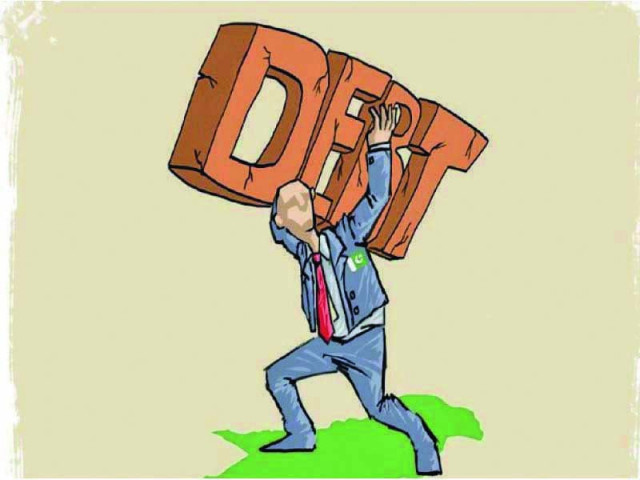Analysing another trade deficit crisis
Deficit will become more alarming if foreign currency reserves take major hit

When the first wave of the pandemic hit Pakistan, the economic policymakers were worried about the contraction in economic activities and uncertainties accompanying the closures and lockdowns announced by the government.
Various incentives were provided to different sectors in order to ensure that the impact of the Covid-19 shock was minimised. Economic indicators turned favourable after the initial shock.
The economic growth recovered to levels above those reported before the pandemic and industrial as well as business activities were at the highest levels in recent years.
The large-scale manufacturing (LSM) index and State Bank of Pakistan-Institute of Business Administration’s Business Confidence Index soared earlier in the year.
Today, the economic conditions are disconcerting. After reaching their peak earlier in 2021, the trend has reversed and the indices have started to fall.
The Business Confidence Index was at 50 in October 2021 after peaking at 64 in June 2021. The LSM index decreased 1.19% in October 2021 relative to its level in October 2020. The numbers raise the alarm.
Import levels have increased, almost touching the $8 billion mark in November 2021, the highest level ever reported. This is 84.7% higher than the value reported in November 2020.
Similarly, the exports have increased to $2.9 billion, approximately 33.7% higher than the value reported in November 2020.
The trade deficit, according to the Pakistan Bureau of Statistics (PBS), exceeded $5 billion in November 2021, 29% higher than that reported in October 2021.
Imports in the first five months of FY22 were reported at $33 billion, 69.6% higher than the value reported in the same time period of FY21.
The growth was observed across all major product categories. Some of the important categories of interest that have reported higher levels of growth are machinery, particularly textile machinery, transport equipment and petroleum products.
Imports of completely built up units and imports of knocked down units have increased.
While there is growth in the quantity of petroleum products and petroleum crude, the price effect seems to be dominating. Furthermore, the import of raw cotton has increased, in terms of quantity and value.
Considering the growth in exports, food products and textile products have both contributed significantly to the increase in total exports from Pakistan.
Total exports have increased 26.9% in the first five months of FY22 over the dollar value reported for the same time period of last fiscal year, with an absolute difference of approximately $2.6 billion.
Food products have added $400 million and textile products have contributed approximately $1.7 billion. Knitwear sector alone has contributed approximately $500 million to this equation.
However, it is important to note that the quantity of exports of knitwear has actually dropped 14%, which suggests that the increase is dominated by the price effect.
In essence, both exports and imports are likely to be dominated by an increase in price levels, particularly for the more basic commodities.
With the uncertainties about price levels likely to continue as the Omicron variant spreads across the globe, it will be difficult to predict the trend in the trade deficit. However, it is likely that the dollar value of imports, particularly of petroleum products, will fall.
Central bank data
The SBP’s data on receipts and payments in trade flows suggests that the balance of trade is not as disconcerting as shown by the numbers published by the PBS.
The SBP reports $330 million was paid on medicinal products in the first five months of FY22, while the PBS reports it to be more than $2.1 billion, which increased 383% year-on-year.
Similarly, the payments made on the petroleum group, reported by the SBP, are approximately $1.3 billion less than that reported by the PBS.
Overall, the total imports reported by the SBP in the balance of payments data are $3.2 billion less than that reported by the PBS for the first five months of FY22.
It is important to note that the SBP reports $2.4 billion as “other payments”, which are likely to include financing by other sources, land-borne imports from Afghanistan and imports of Export Processing Zones.
However, it can be assumed that the surge in imports of medicinal and petroleum products, reported by the PBS, is financed by non-banking sources and counted as “other imports”, though the SBP does not make any direct reference to particular products in “other imports”.
In essence, the difference between the numbers reported by the PBS and SBP suggests that payments from banking channels on imports in the first five months of FY22 are lower than the value of goods imported into Pakistan. Although payment concessions through different modes of financing and time delays are common in trade and can benefit importing countries, the trade deficit itself will be more alarming if the foreign currency reserves held by the SBP take a major hit and start a downward trend in the long term.
Services exports
Although exports of goods have continued to increase since the end of FY21 as the economy recovered from the pandemic, a paradigm shift is the increasing exports of services, driven by exports of ICT services.
Exports of services in the first four months of FY22 have crossed the $2 billion mark, registering a 24% year-on-year increase.
Exports of ICT services have increased 39.2% year-on-year in the first four months of FY22 whereas exports of business services have increased 25.4%.
It is reported that startups have attracted more than $300 million in investment in this calendar year. This is significant given that Pakistan received less than $2 billion in foreign direct investment (FDI) in the last fiscal year. ICT services have tremendous potential and their development can aid the increase in sophistication of the export basket of Pakistan.
The ICT services industry has shown stellar performance with minimal government intervention relative to other industries. It mainly consists of startups and smaller firms that have invested in their capabilities.
The government must facilitate their growth by providing adequate infrastructure and resources.
It is imperative to build the narrative on export growth by boosting firm-level capabilities and improving productivity levels across all sectors rather than through direct government intervention.
The writer is Assistant Professor of Economics and Research Fellow at Centre for Business and Economic Research, IBA
Published in The Express Tribune, December 27th, 2021.
Like Business on Facebook, follow @TribuneBiz on Twitter to stay informed and join in the conversation.



















COMMENTS
Comments are moderated and generally will be posted if they are on-topic and not abusive.
For more information, please see our Comments FAQ